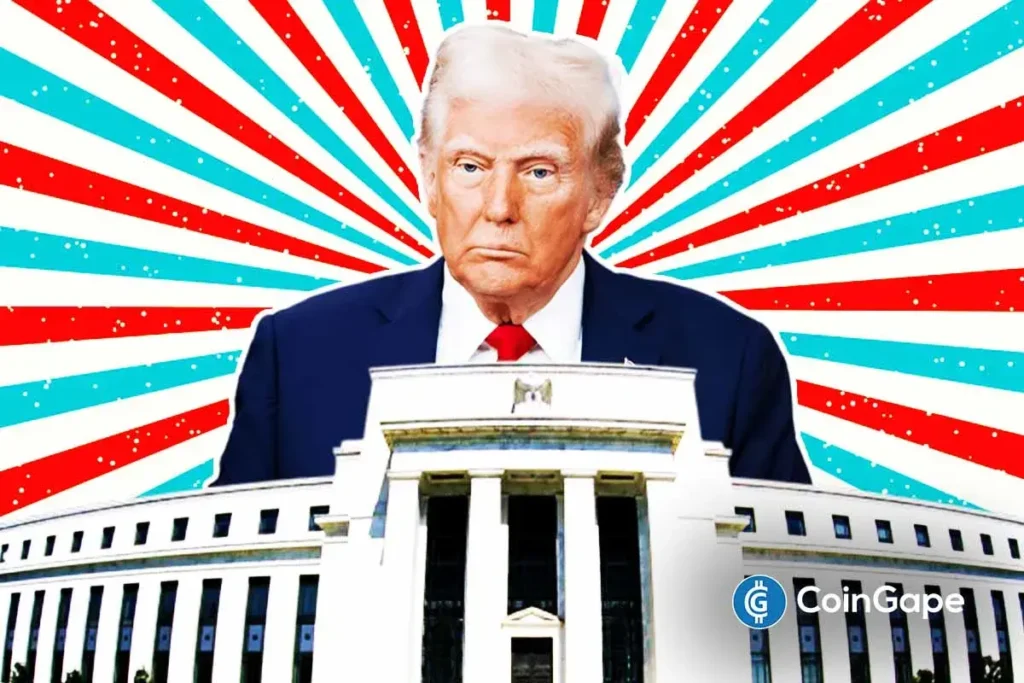Trump Calls for Aggressive Fed Rate Cuts: What This Means for the Economy
As the Federal Open Market Committee (FOMC) meeting approaches in July, President Donald Trump has intensified his advocacy for substantial cuts to the Federal Reserve’s interest rates. The President’s call for a dramatic 300-basis-point cut comes in light of declining inflation and is aimed at staving off significant economic downturns. Trump argues that current interest rates are excessively high, suggesting a revised economic strategy is necessary to enhance capital influx into the U.S. economy.
Trump’s Critique of the Federal Reserve
Trump’s recent barrage of critiques directed at the Federal Reserve is not just a casual remark; it underscores his belief that Chairman Jerome Powell’s current policies are detrimental to the economy. In a post on Truth Social, he claimed that the interest rates are “at least 3 points too high,” which he believes directly contributes to a staggering $1 trillion in economic losses. According to Trump, Powell is responsible for excessive refinancing costs that burden American households and businesses alike. His assertion raises questions on the central bank’s approach in managing monetary policy amid fluctuating economic indicators.
Justification for Rate Cuts Based on Inflation
Supporting his contention for a dramatic rate reduction, Trump emphasizes recent trends in inflation metrics, suggesting signs that warrant an aggressive overhaul of interest rates. He maintains that the data indicates falling inflation and a subsequent need for the Fed to adjust as the economic landscape shifts. Additionally, he has criticized Powell for previously attributing inflationary risks to Trump’s trade tariffs, providing a report from the Council of Economic Advisers to bolster his argument that those tariffs have had no significant impact on inflation levels.
The Probability of a Significant Fed Rate Cut
Despite Trump’s high-stakes demands, the likelihood of the Federal Reserve implementing a 300-basis-point cut remains exceedingly low. Historically, the Fed tends to adjust interest rates in smaller increments of 25 to 50 basis points, making a rapid and steep reduction unlikely. Current predictions suggest that the Fed will maintain interest rates in the range of 425 to 450 basis points, with data indicating a 91% probability of no change during the upcoming FOMC meeting. The anticipated outcomes are largely influenced by key economic reports, which may indicate a stable job market, thus reducing the urgency for drastic rate cuts.
Challenges with Recent Economic Data
Early reports indicating strong job growth in the United States have cast a shadow over the calls for interest rate reductions. As the employment figures improve, so does the confidence in the economy, leading to less pressure on the Fed to make immediate cuts. Furthermore, recent tariffs imposed by Trump on countries like Japan and South Korea have reignited inflationary fears, complicating the Fed’s decision-making process. With various economic indicators showing conflicting trends, the Fed faces a challenging landscape in determining its course of action.
Conclusion: Looking Ahead to the FOMC Meeting
As we gear up for the FOMC meeting in July, the discussions around potential rate cuts will undoubtedly continue to develop. Trump’s vocal support for significant reductions is indicative of a broader concern for the U.S. economy. However, despite political pressure and changing metrics, the Federal Reserve’s cautious approach suggests a preference for stability over hasty adjustments. The balance between encouraging economic growth and managing inflation will remain at the forefront of the Fed’s concerns as it navigates the complexities of the current economic landscape.
Ultimately, while Trump advocates for aggressive rate cuts, the Federal Reserve’s response will likely reflect a more measured approach, grounded in robust economic analysis rather than political demands. This tension between political imperatives and economic realities will continue to shape the discourse around monetary policy in the United States.


